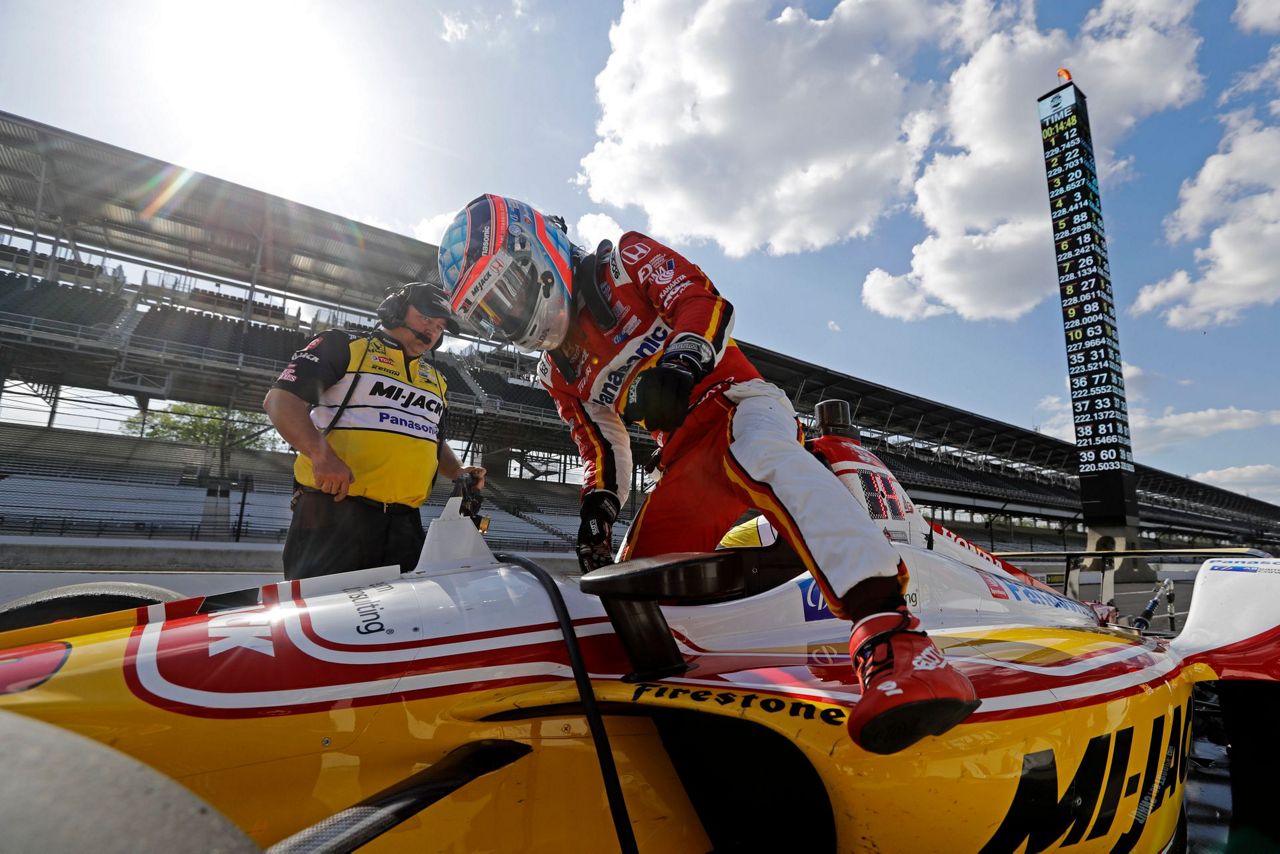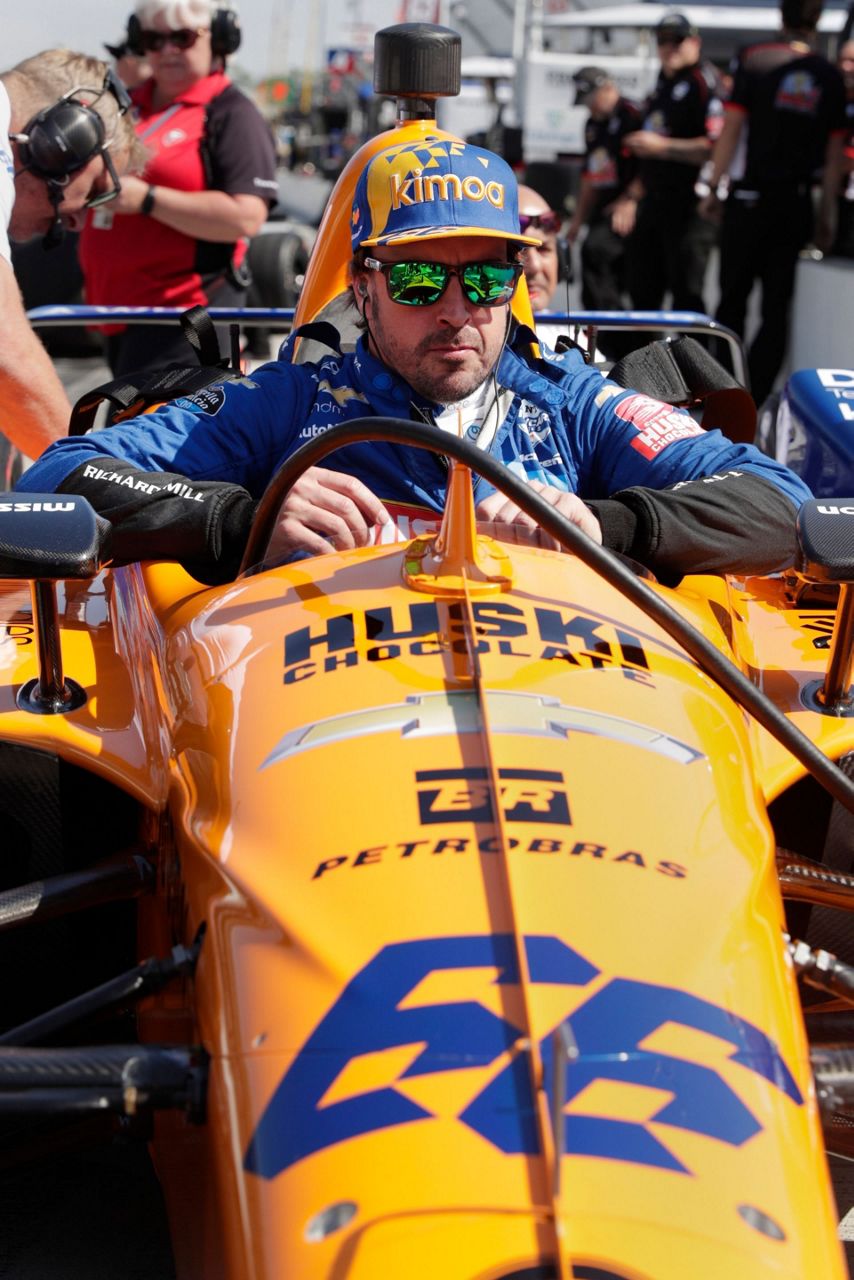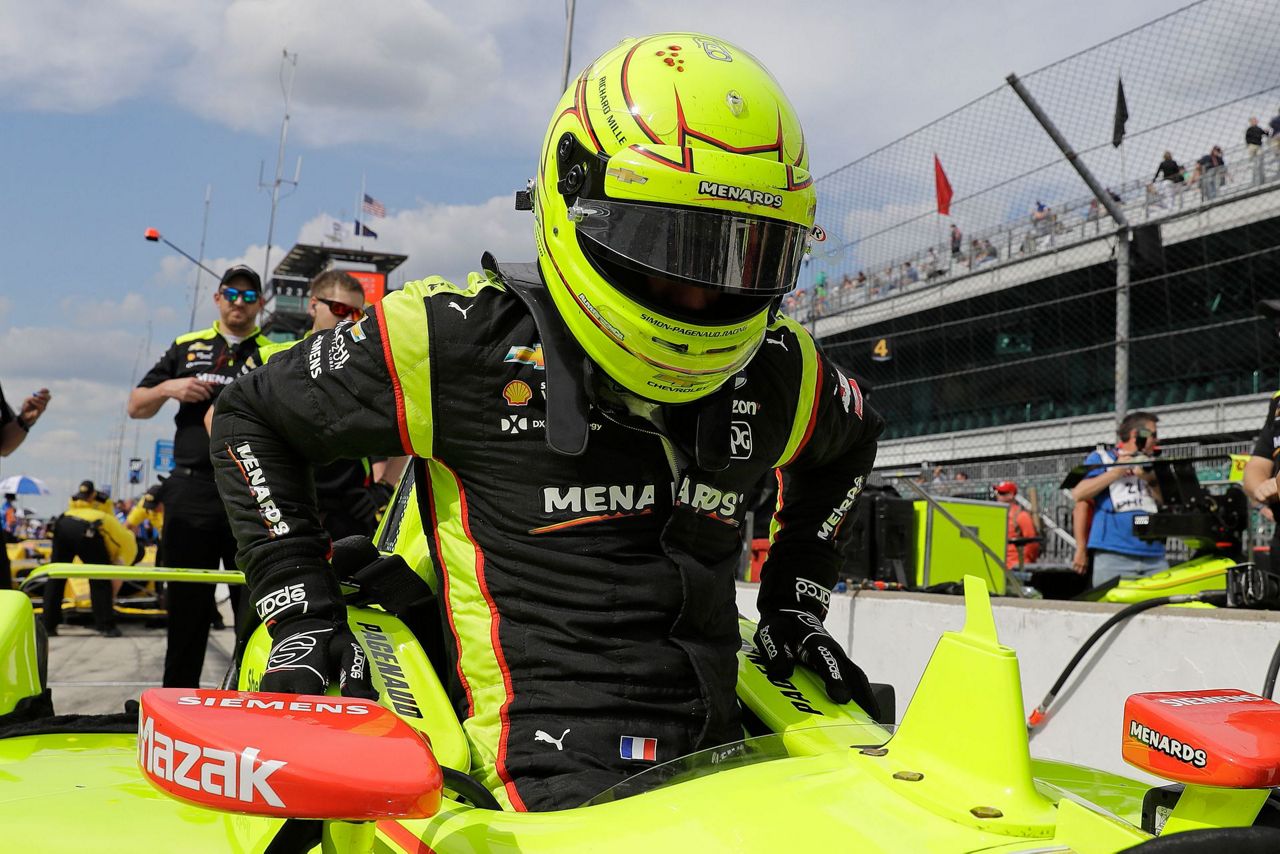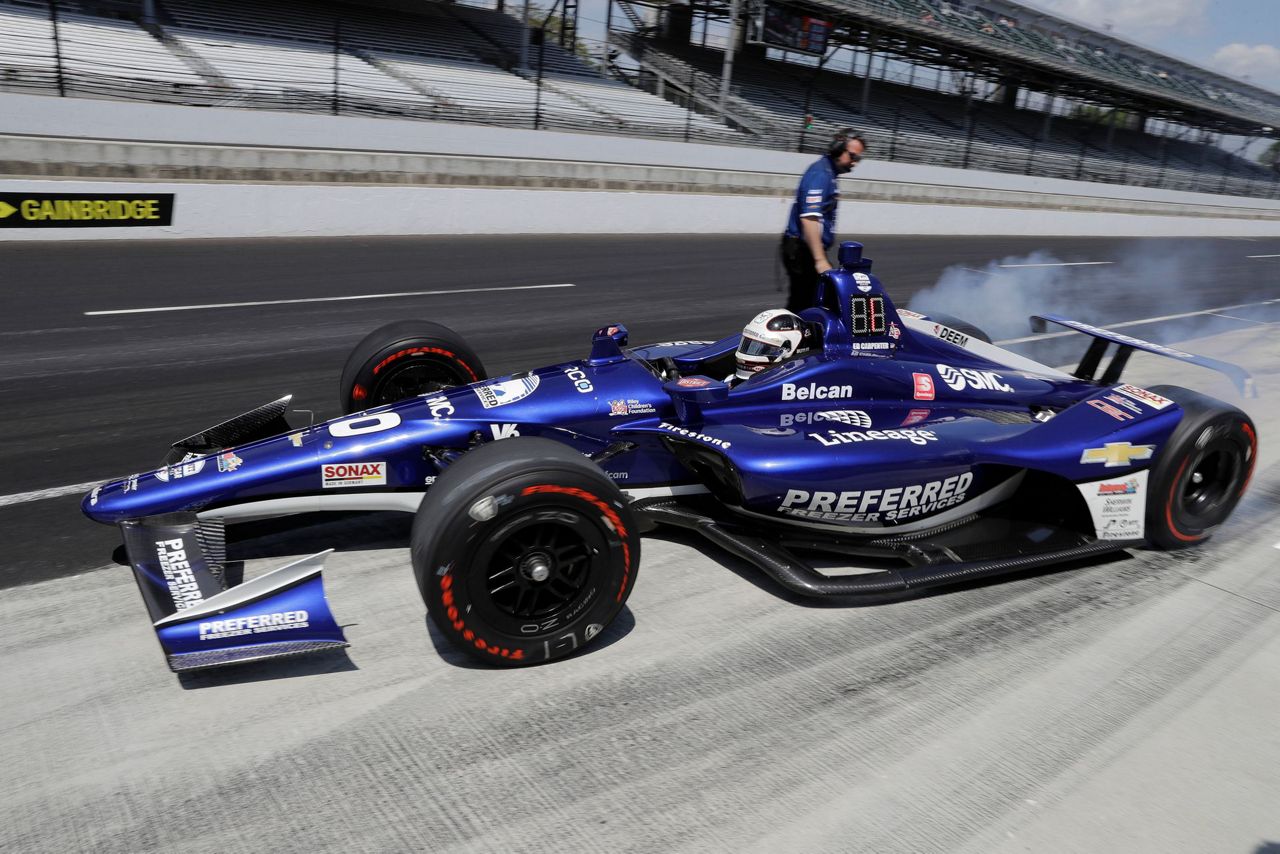INDIANAPOLIS (AP) — The first time Takuma Sato drove with IndyCar's new debris deflector he felt like he had one eye closed. Ed Carpenter thought he was seeing double.
A one-day test in April, last weekend's road race and two full days of practice on the oval at Indianapolis Motor Speedway have helped change those initial perceptions — even as they fight to get fully acclimated to the new safety device: a 3-inch tall, ¾-inch wide metal plate attached to the chassis just inches from drivers' faces.
"Like everything, you get used to it," said Carpenter, the series' only owner-driver. "When you're in a race car, you become very accustomed to your surroundings so any time you put something in your field of view it's a little distracting."
Last month, series officials announced they would attach the devices to the cars for the rest of the season. Engineers designed the part to prevent debris from hitting drivers in the head and causing serious or fatal injuries like those suffered by Justin Wilson in August 2015 at Pocono.
Since Wilson's death, the world's two biggest open-wheel circuits have been racing toward safer solutions.
Last year, Formula One added a protective halo, constructed of three thick, titanium bars that fit around the driver's head. The base attaches to the cockpit and the 15-pound device is reportedly strong enough to hold a double-decker bus. Though it looked strange, drivers made a seemingly smooth transition.
IndyCar, which races at significantly faster speeds, discarded the F1-style halo because series officials said the piece couldn't be fitted onto the current chassis. Work continues on other options such as a clear, protective windscreen.
The deflector plate was not an issue during the test, last weekend's road course race or during the first two Indianapolis 500 practices this week ahead of the showcase May 26 race.
Carpenter said he still notices the split-screen view when he's in the pits and sometimes when he's making passes. Sato, the 2017 Indianapolis 500 winner, said he still feels like his left eye is completely blocked when he enters turns.
"It's less obstructive than it was on the test day but you can still see it blocking some of your eyesight," said the Japanese driver with Rahal Letterman Lanigan Racing.
Sight lines aren't the only concern.
While IndyCar President Jay Frye said he's had no driver complaints this month, Americans Sage Karam and Conor Daly spent their season-opening practices Tuesday contending with wind buffeting their heads — airflow affected in part by the deflector plate.
"Obviously there's a big difference," Karam said. "It's definitely disruptive as far as the vision. But we'll work on it. We've got a couple of different options."
Three-time Indy winner Helio Castroneves and 2013 Indy winner Tony Kanaan, both Brazilians, see things differently.
Castroneves races full-time in sports cars with Roger Penske's team and has learned how to deal with windshields and cameras, so he had no trouble adjusting to the new sight lines — especially for something he calls a "great step forward." Kanaan agreed, though he acknowledges his background in stock cars, sports cars and endurance races also may have helped.
"I don't even notice it," said Kanaan, A.J. Foyt Enterprises' top driver. "They don't give you an option, so it doesn't really matter."
Translation: Get used to it.
"I'm sure we'll adjust to it pretty quickly because we have no option," Sato said. "We've got what we've got."
___
More AP auto racing: https://apnews.com/apf-AutoRacing and https://twitter.com/AP_Sport
Copyright 2019 The Associated Press. All rights reserved. This material may not be published, broadcast, rewritten or redistributed.






